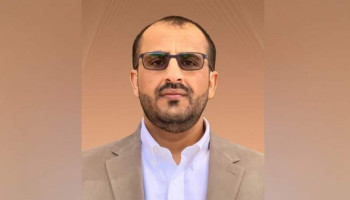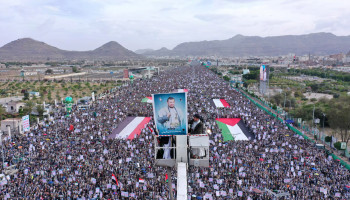The bloody campaign led by the regime in Saudi Arabia against Yemen will enter its sixth year next month, and Riyadh has almost entirely failed to achieve its goals due to resistance manifested by Yemeni fighters who have not only successfully fought back but also inflicted significant damage upon the Saudi war machine.
On January 25, Yemeni army troops and allied fighters from Popular Committees launched a massive offensive, code-named Bonyan al-Marsoos (Firm Structure), to confront a major act of aggression by the Saudi-led forces that was targeting the capital Sana'a.
The Yemeni counterattack not only thwarted the planned Saudi offensive but also liberated all areas of Nihm district, in Sana’a province, from the grips of Saudi-led forces. The massive operation was backed by drone cover.
Yemen's Arabic-language al-Masirah television network, citing spokesman for Yemen’s Armed Forces Brigadier General Yahya Saree, said in a detailed report on Monday that Bonyan al-Marsoos operation led to the liberation of vast areas in the northern province of Jawf and the central province of Ma’rib.
During a press conference, Saree added that Yemeni forces managed to liberate a total of 2,500 square meters of land from the clutches of invaders.
The Yemeni forces had also managed to seize dozens of tanks, armored vehicles, military vehicles, artillery, and weapons stores from the Saudi-led forces, he added.
Saree said at least 1,500 forces of the Saudi-led coalition had been killed and 1,830 others sustained wounds in the operation. Nearly 170 others were detained by Yemeni forces, he added.
The Firm Structure operation, which began on January 30, also led to the destruction of 17 battalions of the enemy forces, further added the Yemeni army’s top official.
Saree said the massive operation involved at least 41 aerial attacks, conducted by Yemeni combat drones, against positions of Saudi-led forces both inside Yemen and inside Saudi Arabia.
According to the report, Yemeni forces also conducted 21 missile attacks against targets in airports of Jizan and Najran, two southern provinces of Saudi Arabia, and that of Abha, the provincial capital of Saudi province of Asir. The missile attacks also targeted the Saudi Aramco oil facilities, which had also come under attack by Yemeni missiles and drones last year.
In March 2015, Saudi Arabia, with the help of a number of its allies, particularly the United Arab Emirates (UAE), launched a brutal military campaign against impoverished Yemen, whose former President Abd Rabbuh Mansur Hadi had fled to Riyadh a few months earlier after stepping down the previous year.
The Saudi-led campaign, code-named Operation Decisive Storm, was launched to achieve two main objectives: bringing Hadi, a staunch ally of Riyadh, back to power, and crushing Ansarullah, whose fighters have proved to be of significant help to the Yemeni army in defending the Arab country against the invaders since the onset of the imposed war.
At the onset of the war, which began as an aerial campaign, Saudi rulers and the kingdom’s then defense minister, Prince Mohammed bin Salman, were confident that their clear military advantage would provide for an easy victory.
However, despite spending millions of dollars and employing foreign thousands mercenaries, particularly from Sudan, the Saudi regime has deeply bogged down in Yemen and has practically failed in achieving both of its objectives.
Ex-president Hadi is still in Riyadh and Houthi fighters are still defending Yemen along with the Yemeni army and the Popular Committees.
The Yemeni army has devised and manufactured its own ballistic missiles and combat drones, which has changed power balance against the failing Saudi-led coalition.
Source: Press TV
As Saudi War Enters Sixth Year, Riyadh Caught off Guard by Yemen’s Massive Offensive
الخميس, 06 فبراير 2020







